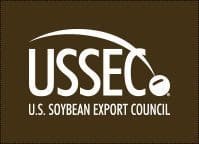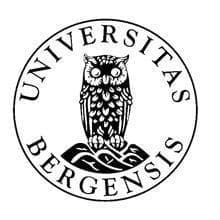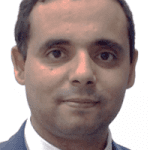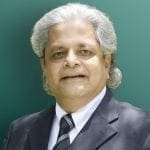In September 2020, The United Soybean Board (USB) and U.S. Soybean Export Council (USSEC) hosted Hack to the Future: A Soy Market Challenge. This is the second of a series of System Dynamics Hackathons in partnership with the System Dynamics Society and the University of Bergen in Norway.
Why the soy market? Soybeans are an important global crop with numerous possibilities for use. Soybeans are used in food, animal feed, and biofuels. They are being developed into environmentally friendly alternatives for use in industrial and commercial products. Soybeans produced in the US may be one of the most sustainably produced agricultural commodities in the world, yet the market share for US soybeans and soy products has not experienced the expected growth compared to other suppliers in the European Union (EU) market.
The goal of the Soy Market Challenge was to present new ideas and strategic approaches for increasing the market share of US Soybeans in the European Union (EU). The United Soybean Board, which represents US soybean farmers, seeks to better understand barriers to market growth and desires recommendations to enhance recognition and purchases of US Soy in the EU.
The Hackathon was launched on August 31, 2020 at 3pm CEST. Teams of 3-5 participants had until September 11, 2020 to develop and provide a System Dynamics analysis of intervention strategies that would have the largest positive impact on US market shares for soybeans and soy products in the EU, with particular attention on sustainability metrics that provide potential competitive advantage for US soybeans. Generous cash prices for the top three teams (1st place $2,500, 2nd place $1,500, 3rd place $1000).
The winners are featured below.
Press Release:
Soy Market Challenge Opens the Door to Fiurther U.S. Soy Demand in the EU



BEST MODEL AWARD
For the best System Dynamics Model
The future of US-produced soybeans in Europe to 2050

Bent Erik Bakken

Mindy Block

Leonard Malczynski

Ricardo Salinas
The Challenge
The vast prairies of the US produce massive amounts of extremely productive crops, unrivaled in the world. Soybeans are an important part of that agriculture output. Soybeans yields have been optimized using the latest findings in agriculture science, including significant amounts of mineral fertilizers and GMO treated seeds.
Demand for soybeans has expanded, partly as a growing middle class increasingly shift their diets from plant-based to meat-based proteins. Meat and increasingly farmed fish are totally dependent on soybeans to allow for the high output of meat and mariculture.
However, both the soybean production’s high yield resulting from agriculture science and problematic animal welfare in industrial meat and mariculture is met with increasing resistance from a sustainability perspective (Eat/Lancet report, 2018). The combined effect of both is that in increasing niches in developed countries, there is an increased interest in organic farming (of both plants and meat), and a shift towards a total plant-based diet. Typically, you need 10 kgs of soy to produce one kg of meat, or 2 kg to produce 1 kg of fish, with white meat in between.
Also, meat (especially red..) is highly problematic in terms of health, with both cardiovascular and obesity challenges as central challenges.
The consequence is that especially in important US West and East Coast milieus, and increasingly also in Europe, one must expect that by far the fastest growth in market niches will come as soybeans in other uses than through the stomach of animals or fish (though especially fish farming is expected to grow fast).
This project investigates the future of the soybean market in Europe, especially US-based, considering these dynamics.
The Model
A highly aggregated model of soybean imports with a European Union frame of reference was produced in Powersim Studio 10. The model does not ‘give an answer’ . It provides a tool for understanding the dynamics of soybean imports to the European Union with a focus on exports from the United States.
The model covers these broad modules:
- Yield
- Acreage
- Production
- Price relationships
- Exports
- Consumption
- ‘Characteristic’ demand
- Demand
- Competition
- Attractiveness
Running the model and examining the model code is highly recommended. The modular nature of the modeling tool and the model itself make it receptive to further expansion, e.g. storage, soybean oil, and soybean cake imports, and further detail, e.g. attractiveness, competition, sensitivity analysis, and optimization. Figure 1 is the opening application screen.
Figure 1 Soy market challenge application splash screen.
Conclusion
As a rich region, Europe will see three main developments over the next 30 years. The first is that the diet will be increasingly plant-based. The recent EU green deal points out goals for this shift, and with taxation and other policy instruments, this already well-established trend will accelerate. Second, animal proteins will shift from land to ocean-based meat/fish, with corresponding lower soy needs per kg meat/fish. Third, the already well-ingrained skepticism towards industrial farming will continue. To serve the European market, side-effects of industrial agriculture, be it soil degradation from mineral fertilizers, loss of animal welfare or herbicide-resistant weeds must be countered. In the first phase, this can only be completed through less intensive farming. In the longer run, perhaps the arguments against GMO side effects, and the effects themselves, should be mitigated.
Meet the Team
Professor Bent Erik Bakken is a senior principal specialist and chief analyst for DNV GL’s Energy Transition Outlook. His current work explores the interfaces within and between the green energy transition and energy-dependent organizations. He is an expert on designing models of complex systems and using them for interactive simulations to drive successful strategic transformations in various societal sectors. Bakken’s experience includes a research directorship at the Norwegian Defense Research Establishment and VP of Management Consulting at the Atkins (then named TerraMar) project risk management consultancy. Holding degrees in Management and Policy Sciences, including a Ph.D. in System Dynamics from MIT, he has also studied Psychology and Business Economics at the Universities of Oslo and Lausanne. He is a former head of the Operations Research Society of Norway and a current member of the System Dynamics Society. Bakken has published dozens of articles and (co-) authored two books. He is also an adjunct professor of behavioral science at the Oslo Metropolitan University.
Leonard A. Malczynski is a system dynamics practitioner, micro-economist, and software engineer. His current activities involve being Vice President for Meetings of the System Dynamics Society, a software specialization in Powersim Studio, Group Moderator of the international Powersim Users Group, and development of software engineering techniques applied to system dynamics modeling. Leonard has also taught information systems, microeconomics, and system dynamics at the University of New Mexico since 1988, engineering economics at New Mexico Tech, and several short courses in system dynamics and the use of Powersim Studio.
Mindy Block’s service as an NGO professional for Quality Parks brings a variety of tools to the task of conservation, including direct observation of existing conditions, researching laws and policies, participating in field, meetings, and conversations, and establishing transparency through documentation. Her skills also include interagency analysis, coordination, communications, (limitations, boundary, alignments, etc.) Both in the field and in the office, I enable, coach, and encourage team participants to do more. She has MS degrees in Computer Science and Environmental Studies, focusing on systems and organizational change to improve existing conditions.
Ricardo Salinas is a curious individual that enjoys the learning process as well as understanding why things happen and in which context. His professional experience is focused on consulting, with a specialty in software solutions and team management. Ricardo attended the 2019 System Dynamics Society Summer School.
Best overall delivery (3-way tie)
Model, presentation, and actionable insights
Aimed at developing a demand-sector and a supply sector and then to bring them together in a market module.

Willard Noyes

Sanjeet Jaiswar

Ashish Shrestha
The Challenge
Our project aimed to develop a demand sector (which tracked all the major inputs into European soy demand) and a supply sector (which tracked all major inputs into US soy production) and then to bring them together in a market module.
The most engaging part of this project was diving into all of the complexities of the global soybean market and trying to pick out the most important pieces to solve this particular issue. For many modeling projects I have done in the past, it usually is quite difficult to find reliable data, but in this case, we were actually overwhelmed by how much data was available to us! If anything it almost made the project more difficult because we could easily find data to model just about anything we could come up with. With this much data, it was actually hard to stick to a reasonable model boundary.
The Model

The conceptualization of the model was a very interesting process as well. We had very interesting discussions about what archetypes are prevalent in this problem, what model structures we would use, and what the mechanics of our model would be. Our initial hope was to build a very sophisticated optimization model, so we started big, but we quickly got tangled in the complexity of the problem and had to rethink things again and restart with a much simpler model within the last few days of the contest. We are now kicking ourselves for not starting small in the beginning and then incrementally building onto it. We think if we could have had just a bit more time we could have addressed a lot of issues we saw in our model. It was really quite a rush in the final 48 hours to get the project to a deliverable status!
Conclusion
In the end, our determination was that increasing US soy exports to Europe is really a very complex and tricky optimization problem. The best way we determined to export more was to invest in industries (such as aquaculture) that would naturally pull the kind of soy that the US grew into Europe. As for the regulation side of things, there seems to be a balancing act between different sustainability measures, and all soy exporters use a different mix of these measures. Particularly sustainable land use and utilization of GMO varieties are the two largest factors to soy sustainability. The US seems to do very well with sustainable land usage, however, it does not do great when it comes to growing non-GMO varieties. There is a tradeoff between the mix of sustainability practices a country uses, overall productivity, and the relative desirability of the sustainability profile of a country’s soybean to the world market. In the end, global commodity markets are quite ruthless; and it is very difficult to exert much influence on who you can sell to. At a certain level, politics seems to play a much larger role than economics.
Meet the Team
Will, Sanjeet, and Ashish all live in Bergen and have graduated from or are working toward a master’s degree in the System Dynamics program at the University of Bergen. Will is from Michigan and has a background in Accounting and Finance in the senior housing industry and is currently working toward a master’s degree in System Dynamics. Sanjeet comes from Nepal and has a degree in mechanical engineering and is also working toward his master’s degree in system dynamics. Ashish also comes from Nepal and has a background in Finance and Economics- he completed his master’s degree in system dynamics this spring and is now moving onto another master’s in Global finance. All three of us enjoy a hike in Bergen’s beautiful mountains or a night of drinking beers and talking System Dynamics.
Worked on the dynamic problem definition component of the problem articulation phase

Saied Dardour

Srinivas Dharmadhikari

Cynthia Garde
The Challenge
The challenge objective posed by the USB and USSEC was to better understand US soy market share barriers in the European Union (EU) and recommend policies for increasing EU market share. In the modeling process, Team 5 worked hard on the dynamic problem definition component of the problem articulation phase. Among other phenomena, some clear dominant forces emerged in the analyses: the current state of socio-economic forces influencing the soy marketplace impacted by external and random forces, like the COVID-19 pandemic, and limits to growth. Further extending this, Team 5 was principally focused on understanding systemic shocks, sustainability efforts (i.e., the goal-to-problem reality gap), path dependence, awareness noise, and limits to growth. It was also decided that the short study would not consider short-termism as a basis of any viable recommendation. Identifying feedback systems was crucial, if not significant.
The Model
One central reference mode (of several) underlining Team 5’s dynamic hypothesis was about systemic behaviors, including soybean export, past, and current. US soybean production costs are high and there’s not enough US soy product diversification and awareness–about material alternatives (affecting global sustainability and economics)–thus increasing US soy market share but at a decreasing rate.
Team 5’s policy recommendations are based on a modeling process entailing:
- A system dynamics framework and methodology;
- Market research and competitive landscape analyses;
- Value proposition definition and strategic positioning, and;
- Demonstration of the business case.
The complex problem also called on looking at several sectors not limited to soy production (rates) but also at limits to growth in counterintuitive–national and international–regulatory efforts. No other framework like system dynamics can generate a living and more complete picture of the system state and possibly what’s to come and consider.
Team 5’s modeling and simulation efforts resulted in determining potential tipping points (i.e. intervention points) which can make big differences in the long run for the US soy market. Team 5 questioned optimality amid feedback dynamics.
Conclusion
A few (of several) takeaways and postulates contributing to identified tipping points include*:
i. The dynamics of conversion of EU importers, from “indifferent” importers, to “responsible” importers. Team 5 proposed creating incentives towards purchasing sustainable-minded soy product;
ii. The equilibrium of supply and demand for “sustainable” soy and soy-based products;
iii. Increasing soy quality by xu% and sustainability compliance by yv % results in increased soybean word of mouth–followed by increasing industrial product alternatives’ use and overall demand. The underpinnings are amplified noise and reinforced behaviors;
iv. Fish growth rate in fish farms is just starting on the early end of an exponential growth curve.
*Model findings and tipping points are detailed in the final report.
Some project work highlights:
Firstly, as understood well by MIT system dynamicists, no model is right. Mental databases continue to grow and calibrate. The goal is always to understand the underlying problem and model it.
“Developing the conceptual framework–causal diagrams, describing the dynamics we wanted to capture–was, perhaps, the easiest part of the job. Searching for relevant data, to support the models, and then validating the model, was the most challenging phase of the project. The bibliography review, market research, and analysis of the competitive landscape, all conducted at the very beginning of the hackathon, proved to be very valuable in this regard.” (S. Dardour)
“Problem formulation and drawing up system boundaries was a challenging task. With adequate background study, once these two aspects were finalized, causal loop diagrams were easy to imagine and conceptualize. On the whole a very challenging task indeed.” (S. Dharma)
“Articulating the problem is the most challenging exercise, yet significantly important, in modeling–and in itself, it’s a leverage point. So, in the presence of new information, our understanding of the problem changed; research and data analyses coupled with iterative modeling was crucial and rewarding. Because information is imperfect, the learning feedback loop was ongoing.” (C. Garde)
Website: https://www.sinusoid.xyz/
Meet the Team
Cynthia Garde, MBA is a graduate of the Massachusetts Institute of Technology (MIT) Sloan School of Management. She is Chief of Technology at Athreon and a consultant. When she was an Information Technology (IT) manager–prior to MIT–she first discovered system dynamics in her pursuit than to apply a mathematical framework to the complex–and repetitive–problems of IT service models, large implementation projects, and modernizing legacy technology applications at an enterprise organization. Upon reading published system dynamics’ papers about counterintuitive process improvement efforts and other models, she was enthralled. “System Dynamics provides that third and fourth dimension to not only understanding the real problem but doing so with precision. Beyond social science problems, the field is unique–multidisciplinary–and its methodology allows for multiple tools to partake in the modeling process. With experience (and being comfortable with learning a lot through mistakes), a combination of optimization and simulation can be effective.
Saied Dardour, MBA is a graduate of the Engineering School of Monastir, Tunisia, and the Aix-Marseille University, France. Saied has been in the technological R&D sector (at France’s CEA.fr) for almost a decade. He is now Energy Economist at the IAEA, an international organization within the UN system serving as a forum for scientific and technical co-operation in the peaceful use of nuclear technologies. Apart from his activities on energy systems, Saied administrates a private lab [ https://sdardour.com/lab ], where he develops models, app prototypes, User Experiences, and other digital experiments. Saied created iLecture.app, for instance, to help speakers and communication professionals engage with their audiences through live simulations and serious games. “Discovery-based learning environments—incorporating System Dynamics models and elements of game mechanics—are key to understanding complex, interrelated, systemic issues and problems.
Shrinivas Dharmadhikari, MBA is an engineer and director at Metric Consultancy, leading Indian market research and consultancy firm focused on automotive, industrial, institutional, and other industry-based marketing. He completed over 1,300 assignments in various sectors including automobile, retail, financial services, pharma, B2B, and Institutional markets. Upon creating a franchise network of research firms in over 50 countries–spanning the USA, Germany, and UK–he acquired a UK firm and their blue-chip clients such as Jaguar and Land Rover. He is also a writer; publishing syndicated reports and blog contributor for the Huffington Post, Modern Diplomacy, and other newspapers.
Developed two models to try to represent the dynamics of the Soybean sales in the EU

Adnan Bakathar

Dr. Nikhil Joshi

Phyllis R. Kwenda
The Challenge
Our project team developed two models to try to represent the dynamics of the SoyBean sales in the EU. The first model was a high-level model focused on cumulative sales of US Soy produce in the EU. It factored in aspects of product characteristics (e.g. protein content, sustainability), pricing impacts (e.g. currency depreciation, production costs), and market forces (e.g. product mix, distribution channels) and the causal pathways to impact the market share of the US Soy produce in the EU. The second model took a granular view of the market separating the incentives for traders, crushers, and the end-users of imported Soy. This model also considered the different forms of an imported commodity (viz. Beans, soy meal/cake, and soy oil) separately and incorporated the interdependencies, causal loops, and systemic delays in the causal pathways.
Conclusion
Our key findings and recommendations were as below:
- The US had skewed participation in the different forms of the commodity and needed to provide better mix and distribution channels to match the demand pattern
- Currency depreciation of competitors can significantly erode sales, and de-risking strategies such as hedging and options/derivatives need to be employed by the US producers.
- Marketing of sustainability attributes will have a delayed impact on the market due to delays in the causal pathways that drive import decisions. However, we do expect positive impacts in the long term.
Highlights
- The team had no representation from either the Americas or the EU, and no experience of agricultural trade, but was able to build an understanding and deliver insights.
- Although team members were working with different modeling tools, they were able to effectively communicate thought models and ideas using causal loops, and stocks and flows notations.
- Team members were in different countries, time-zones, and cultures. However, the team was motivated and committed. Team discussions were positive and directed towards the common goal.
Low points/challenges
- The team struggled with members being in different timezones. We initially miscommunicated meeting times, and struggled with connectivity, and matching availability. But eventually worked out a distribution of tasks to be effective.
- We also struggled with understanding a large amount of data (such as sales numbers by category, currency fluctuations, etc.). Using graphical visualization of trends helped us estimate factors that might be important and potential causal relationships.
Meet the Team
Dr. Nikhil Joshi is a researcher in Systems Engineering with 14 years of experience. He has completed a Ph.D. from the University of Michigan, and a Graduate Certificate course from the Massachusetts Institute of Technology, SDM program. He has extensive experience in building simulation models for complex systems, such as coordinated machines, business operations, supply chain logistics, market behaviors, etc. using techniques of System Dynamics, Agent-Based Modeling, and Discrete Event Simulation. His work also covers System Architecture synthesis and analysis, with a focus on Model-Based Systems Engineering. Until recently, he was working as a Senior Technical Specialist at the Asia Technology Innovation Center of John Deere India Private Limited.
Adnan Bakather is a researcher in accounting and finance with 15 years of experience in professional life. He completed his Ph.D. from UiTM in financial market research. In addition, he also finished a professional master’s in alternative finance from INCEIF. Dr. Adnan charged with educating, research, and advisory on business discipline. He has a strong commitment to using system dynamic methods to solve complex problems. His work also covers using other modeling approaches in corporate and economic problems. He has an interest in machine learning and artificial intelligence applications. He is currently working as a researcher at King Fahd University of Petroleum and Minerals.
Phyllis R. Kwenda is a final year Ph.D. in Bioresources Systems student at the University of Kwazulu-Natal, South Africa. Her Master’s degree was in the same field, looking into the use of systems analysis techniques for process optimization at a sugar milling area in Swaziland. Her Ph.D. is focusing on ‘Determining an integrated household solid waste management action plan for urban Harare city, Zimbabwe: A systems thinking approach’. In this study, particularly System Dynamics is being used to study and simulate the household solid waste management system in Harare.






